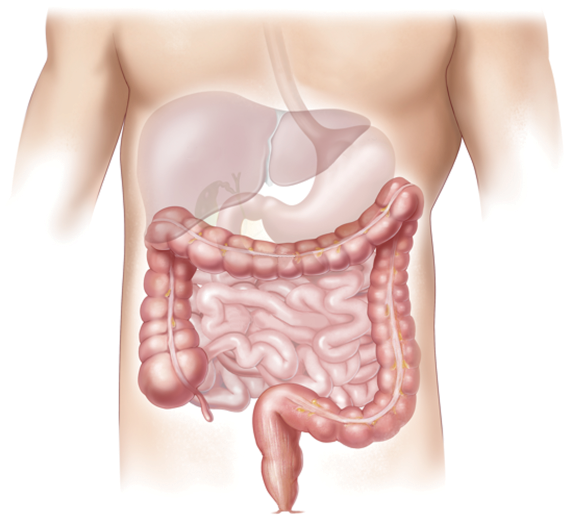
Fungi in the intestine
Yeast fungi play a major role in our diet. Yeasts are essential for the production of bread, baked goods, beer, wine and many types of cheese. Yeasts are able to break down sugar. A collection of around 250 different types of yeast (Saccaromyes Cervisiae) is used as “baker’s yeast”, the “brewer’s yeasts” are a form of this and are used in the production of wine and beer.
Fungal infections can be harmless or life-threatening
Yeasts are particularly resistant fungi. They consist of small spherical or elongated oval cells that form pearl-like chains and multiply rapidly. Fungi are actually plant organisms, but they have cell walls made of chitin, a polysaccharide that is more commonly found in animal cells. Fungi can also attack living organisms; if they get into plants or fruit and spread there, they quickly take over and the plant “goes moldy”. Fungi can also infect animals or humans, resulting in a fungal infection. Such infections can be harmless or life-threatening, in any case fungi are highly immunogenic, the immune system is very well able to form antibodies against the foreign proteins and that is a good thing. Infections with fungi such as Aspergillus niger, the black mold, are a deadly danger for the patient. It is not only the enormous reproduction rate of the fungi that causes problems. Fungal toxins can develop inside the body and cause damage. These include alcohol, which can damage the liver, and CO2, which causes flatulence. However, the metabolic products of the mushrooms or the mushrooms themselves also contain valuable components. Examples include vitamin B12, which is produced in large quantities in certain types of yeast, or the “happiness hormone” serotonin.
If noble mold from cheese gets on meat, fungal toxins are produced
Fungi change their properties depending on the substrate. If noble mold from cheese gets on meat, it produces fungal toxins that can make people ill. So-called meat poisoning, like almost all food poisoning, is actually mushroom poisoning, and every mushroom picker knows that mushrooms can be poisonous. Moldy nuts are the worst. They contain aflatoxins, substances that can be carcinogenic.
Fungi are also important for the intestinal flora
Fungi also play an important role as symbionts of the intestinal flora, the microbiome. Yeasts support digestion. They form ATP, the cell’s energy source. This is probably the mode of action of medicinal yeast:
Harmful and useful at the same time
The mucosal immune system, the lymph follicles in the wall of the large intestine and the vermiform appendix of the appendix are responsible, among other things, for keeping the microbiology of the large intestine under control. Excessive activity of the fermenting microorganisms leads to gas formation and flatulence. If the fungus ascends into the small intestine, it can damage the mucous membrane there. The absorption of sugar, fat and amino acids takes place primarily in the small intestine. The intestinal fungi multiply rapidly. In addition to gas formation, the formation of alcohols should be mentioned here, which can damage the body and the detoxification organ liver. Migraines are often the result of alcohol formation in the intestines. It is actually a hangover and can be treated well with a diet without fermenting ingredients. Some mushroom poisons are drugs that directly affect the nervous system. This results in intestinal motor disorders as well as fatigue, restlessness, hyperactivity and attention deficit disorders, but also uncontrolled aggression. Scientific research in this area is far from complete.
Diagnosis of fungal contamination
The diagnosis of excessive yeast activity in the intestine is difficult. Since the immune system responds to fungi with an antibody reaction, such antibodies can be detected in the patient’s serum. This is one of the applications of the Cytolisa test. An increased antibody titer is an indication that the patient’s immune system is dealing with the fungus particularly intensively. This could then either be answered with a yeast-free diet, but it is also possible that an enteric fungal load is present. In this case, a diet that provides less substrate for the fungi would have to be used. This is where the Cytolab’s nutritional advice is particularly important.
Black mold – Aspergillus niger
Exposure to black mold (Aspergillus niger, AN), which is examined separately in the Cytolisa test, is particularly dangerous. Many people experience allergic symptoms when they enter rooms where black mold thrives. Especially with AN, but possibly also with other fungi, the immune reaction they trigger is also harmful to health. Immunoglobulins are directed against certain proteins of the fungal cells. These antibodies can probably cross-react with the body’s own proteins, resulting in autoimmune diseases. Certain forms of articular rheumatism, but also autoaggressive diseases of the nervous system, such as multiple sclerosis, can be associated with an immune reaction against AN. AN detoxification therapy can be a great help here.
Important partners – responsible interaction
Molds are important partners for us. They enable the production of food and medicines. The first antibiotics were obtained from molds (e.g. penicillin), they are symbionts for digestion, annoying parasites, pathogens or a life-threatening threat. One and the same fungus can perform all these functions. The distinction is made by our immune system and, of course, by the responsible and careful handling of these fascinating creatures, which are located right on the border between the plant and animal kingdom.
Author: Prof. Dr. Gustav Jirikowski
Find out more about the Cytolisa Immune Test and the nutrition program here





